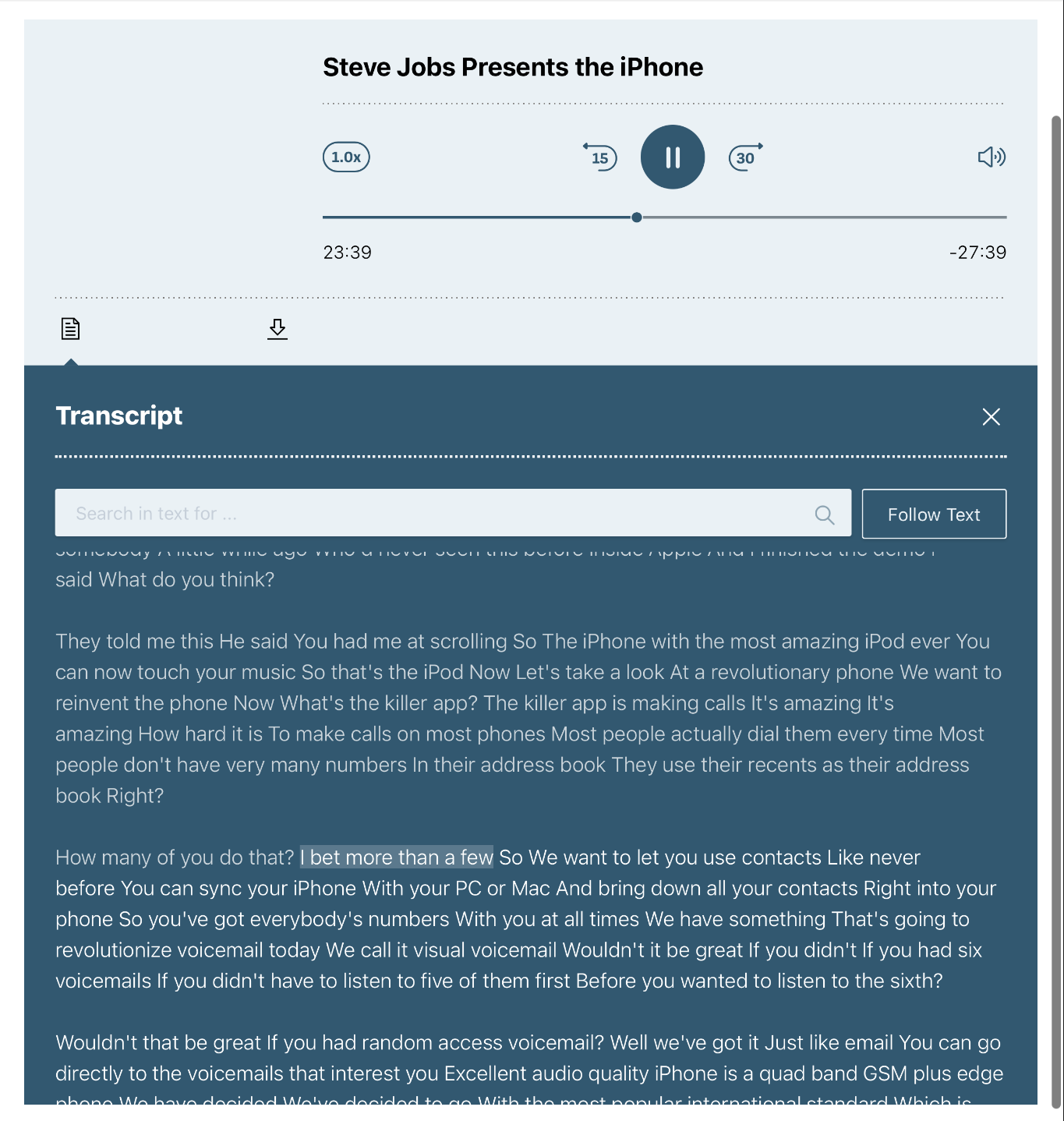Using Transcripts
18 April 2025 – in blog and random
I much prefer listening to reading in general. It’s just easier for me to follow and learn that way. However, if you are working with dense material, such as nonfiction books, audio is not always the easiest to work with. I find myself seeking back a couple of seconds or manually transcribing a sentence or paragraph for my notes fairly often. This is annoying. However, there is a better way, using modern transcription engines and players. So here is my workflow:
Create Transcript
The Manual (and Open Source) Way
There are many ways of doing this, but the easiest (at least for me) is by creating the transcripts locally, using OpenAI’s whisper model, which thankfully is open-weights and thus free to use for everyone. On macOS, this is fairly easy to do using mlx_whisper – I’ll refer to their documentation for the installation steps. To use it, I’ve added this line to my ~/.zshrc:
alias transcribe='mlx_whisper --model mlx-community/whisper-large-v3-turbo --output-format vtt'
Then, create transcripts as follows (running it the first time requires downloading the model first, after that I’m getting approximately 25x real-time transcription speed on a M1 MacBook Pro):
transcribe "<your-audio-file.mp3>"
This will leave you with your-audio-file.vtt, which contains the transcript along with timestamps.
The Comfortable Way
I’ve stumbled across the macOS app MacWhisper which makes this whole process much easier, but you can only use the inferior models for free. It is available from the App Store (and is called Whisper Transcription there), or directly from the developer’s website. The latter claims to give 30% discounts for the pro version for journalist, student or non-profit employees.
You can just import your files, wait for the transcription to finish, and then export the transcript in the correct file format by selecting Export > Subtitles > .vtt.
Consume Transcript
For this, I wrote a little static webpage: riesentoaster.github.io/local-podlove-player/. First, you add your audio file and your .vtt transcription file. Everything happens in your browser, no data leaves your computer. After clicking Load Player, you can start your audio. A few notes on the player:
- You can jump to a timestamp in the audio by clicking on the text in the transcript
- You can set the transcript to follow the audio by clicking
Follow Text - You can change playback speed by clicking on the speed button in the main player controls

Text to Speech
I also wrote about doing the reverse using open weights text to speech models here.